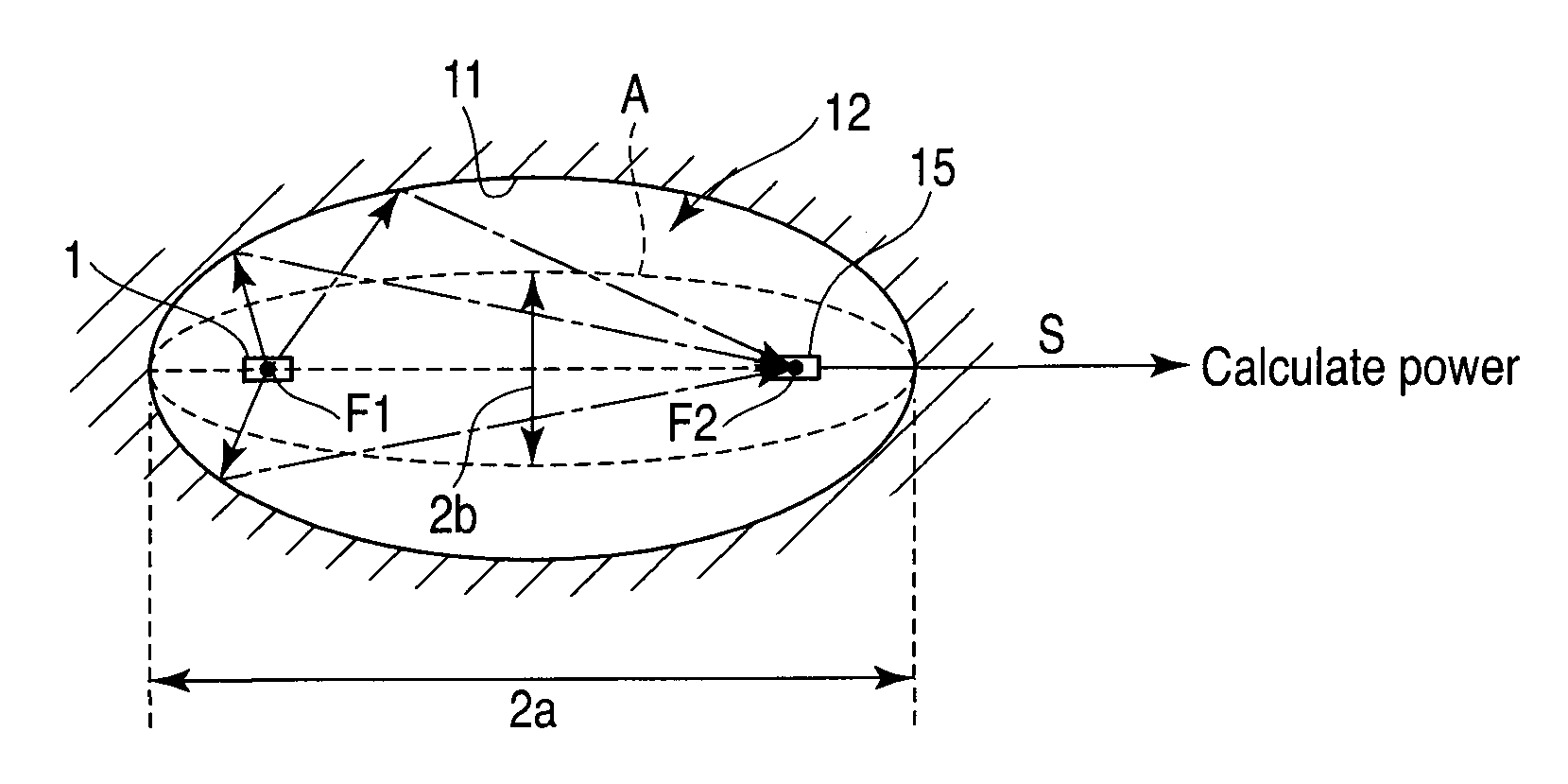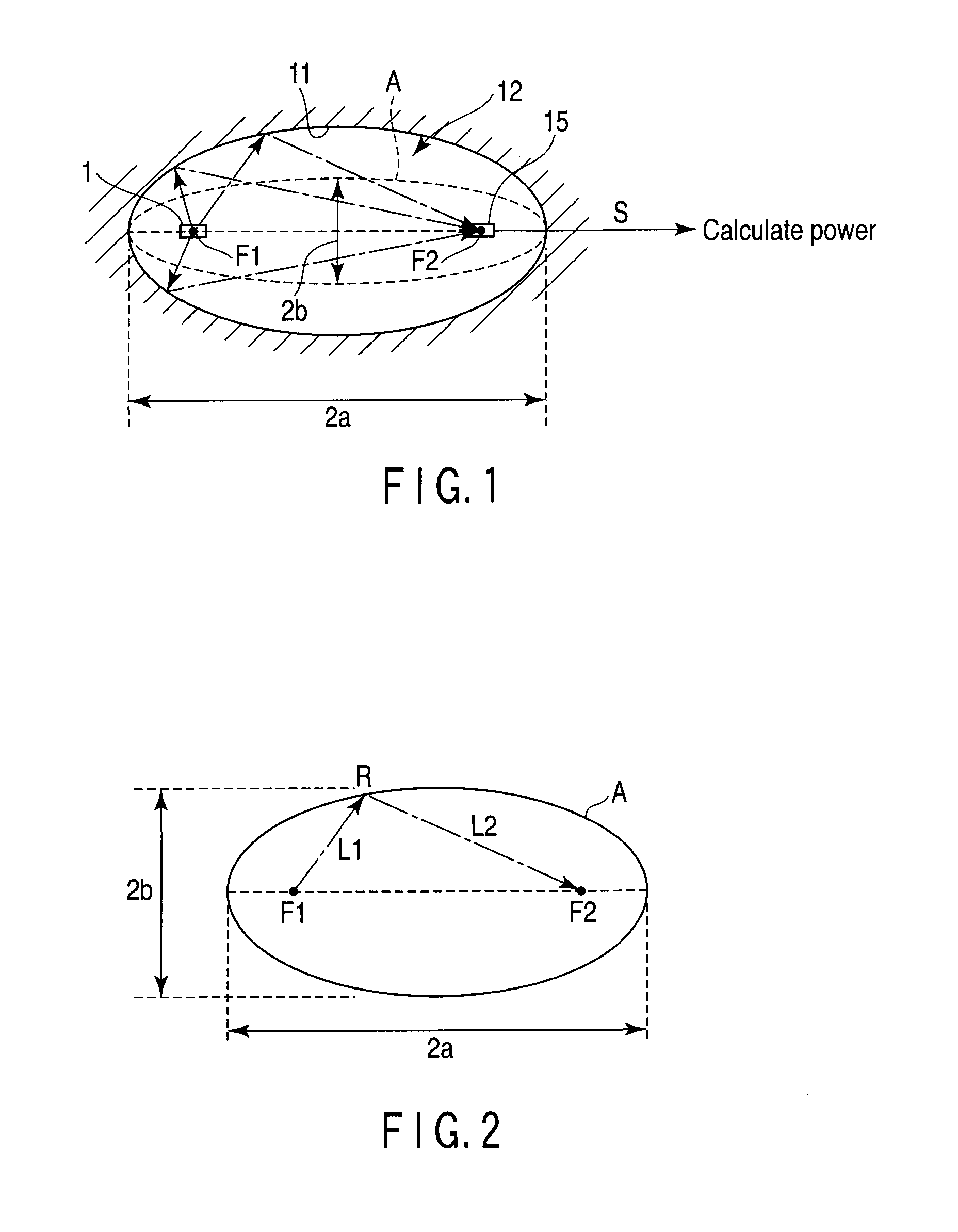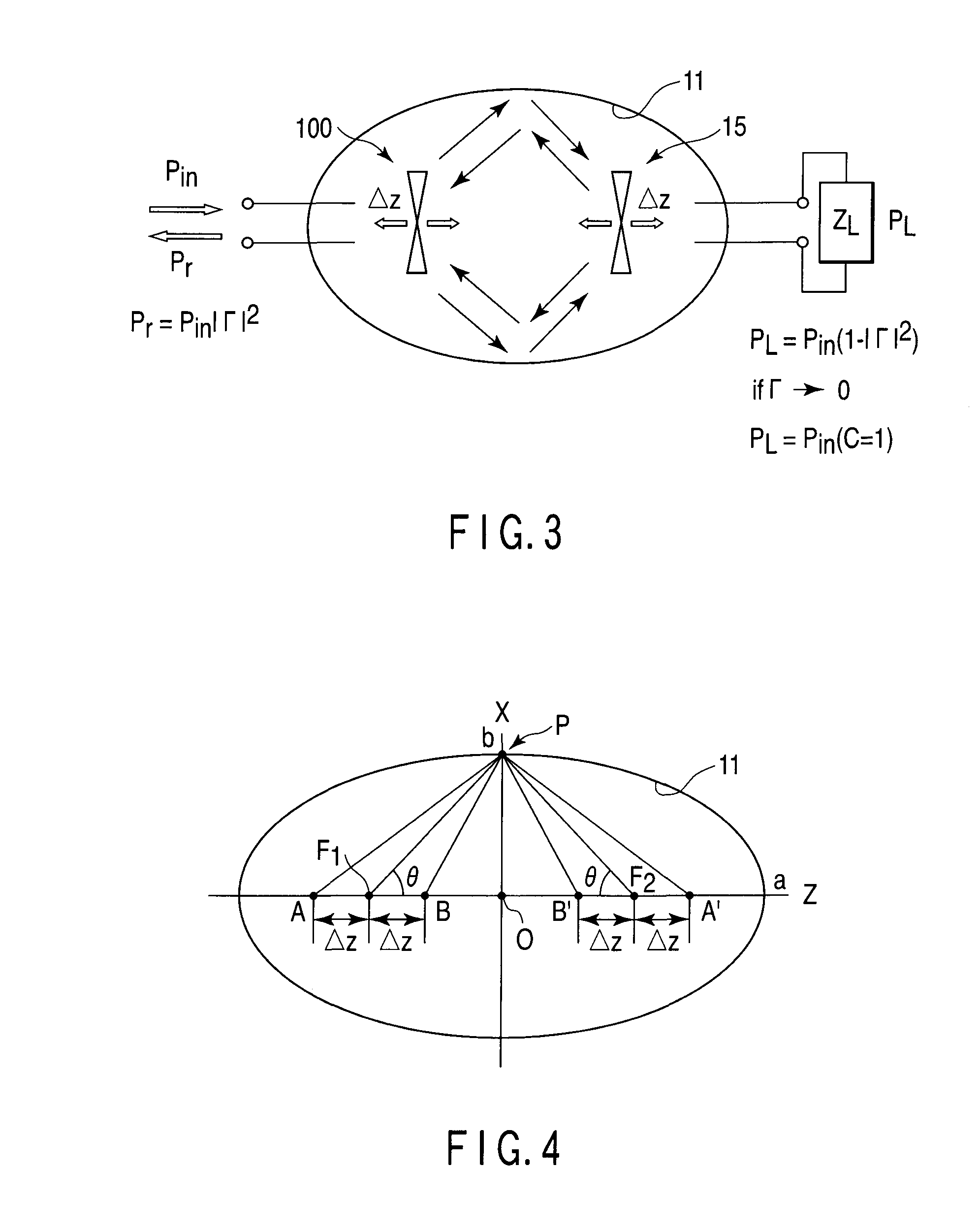Radiated power measurement method, radiated power measurement coupler and radiated power measurement apparatus
a technology of radiated power measurement and radiated power, which is applied in the direction of instruments, transmission monitoring, receiver monitoring, etc., can solve the problems of no test terminal, difficult spurious radiation measurement, and long measurement tim
- Summary
- Abstract
- Description
- Claims
- Application Information
AI Technical Summary
Benefits of technology
Problems solved by technology
Method used
Image
Examples
first embodiment
(Radiated Power Measurement Method )
[0149]As understood from the foregoing description, in the radiated power measurement method according to an embodiment of the invention, as shown in FIG. 5, the DUT 1 adapted to radiate the radio wave is firstly arranged in such a manner that the radio wave radiation center substantially coincides with neighborhood of the first focal point F1 of the enclosed space 12 surrounded by the ellipsoidal metal wall surface 11 obtained by rotating the ellipse around the axis passing through the first and second focal points F1, F2. Similarly, the receiving antenna 15 is arranged in such a manner that the antenna center thereof coincides with the neighborhood of the first focal point F1 of the enclosed space 12 (step S1).
[0150]The radio wave radiated from the DUT 1 is reflected on the wall surface 11 and begins to be received by the receiving antenna 15 arranged in the neighborhood of the second focal point F2. Then, the radiated power of the DUT 1 begins ...
second embodiment
(Radiated Power Measurement Method )
[0153]The measurement method shown in FIG. 5 may include the step of determining whether the total radiated power satisfies the spectrum mask standard as shown in FIG. 6. Specifically, in the measurement method shown in FIG. 5, the DUT 1 and the receiving antenna 15 are arranged in step S1, followed by step S5 to store the spectrum mask of a predetermined standard having a predetermined frequency and a predetermined output strength in advance for the radio wave radiated from the DUT 1.
[0154]Next, the measurement of the output signal at the receiving antenna is started in step S2. In step S3, the DUT 1 and the receiving antenna are continuously or intermittently moved, while at the same time measuring the radiated power of the DUT 1 successively at the measuring end of the receiving antenna 15 thereby to store the change in the measurement value with the movement.
[0155]In step S4 when the movement reaches a predetermined distance, a measurement val...
third embodiment
(Radiated Power Measurement Method )
[0195]The radiated power measurement method according to a third embodiment is different from the aforementioned first embodiment in that the process of steps S2 and S3 to start the measurement of the total radiated power at the measurement end of the receiving antenna 15 and complete the measurement is executed not only along the axis (z axis) connecting the first and second focal points F1, F2 but also along other axes (Y and X axes) orthogonal to the Z axis.
[0196]Specifically, in measuring the total radiated power at the measuring end of the receiving antenna 15, the first step is to adjust the position of the DUT 1 along at least selected one of the three-dimensional orthogonal coordinate axes or, for example, a selected axis corresponding to a Y axis orthogonal to the Z axis.
[0197]Next, steps S1 to S4 are executed on the axis along which the position of the DUT 1 is adjusted, and the radiated power is measured and stored in a memory.
[0198]Sim...
PUM
 Login to View More
Login to View More Abstract
Description
Claims
Application Information
 Login to View More
Login to View More - R&D
- Intellectual Property
- Life Sciences
- Materials
- Tech Scout
- Unparalleled Data Quality
- Higher Quality Content
- 60% Fewer Hallucinations
Browse by: Latest US Patents, China's latest patents, Technical Efficacy Thesaurus, Application Domain, Technology Topic, Popular Technical Reports.
© 2025 PatSnap. All rights reserved.Legal|Privacy policy|Modern Slavery Act Transparency Statement|Sitemap|About US| Contact US: help@patsnap.com



